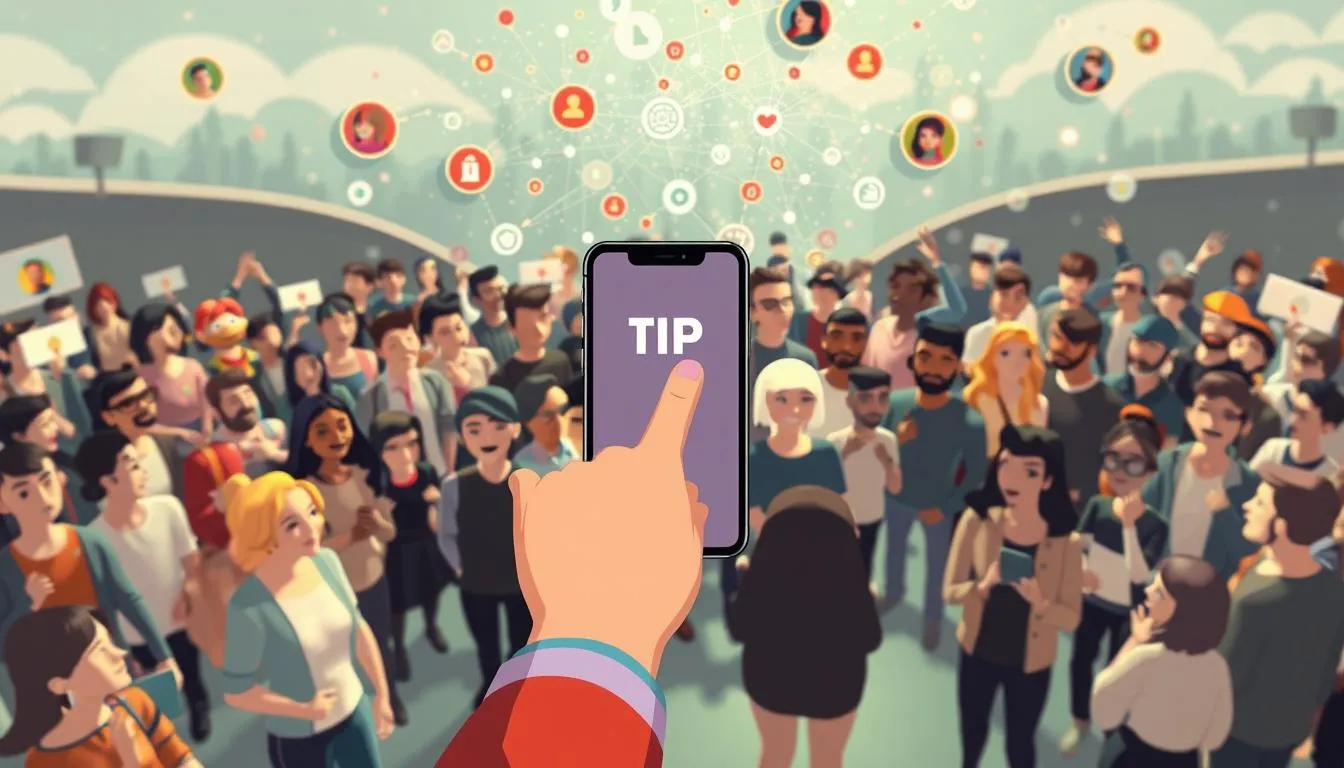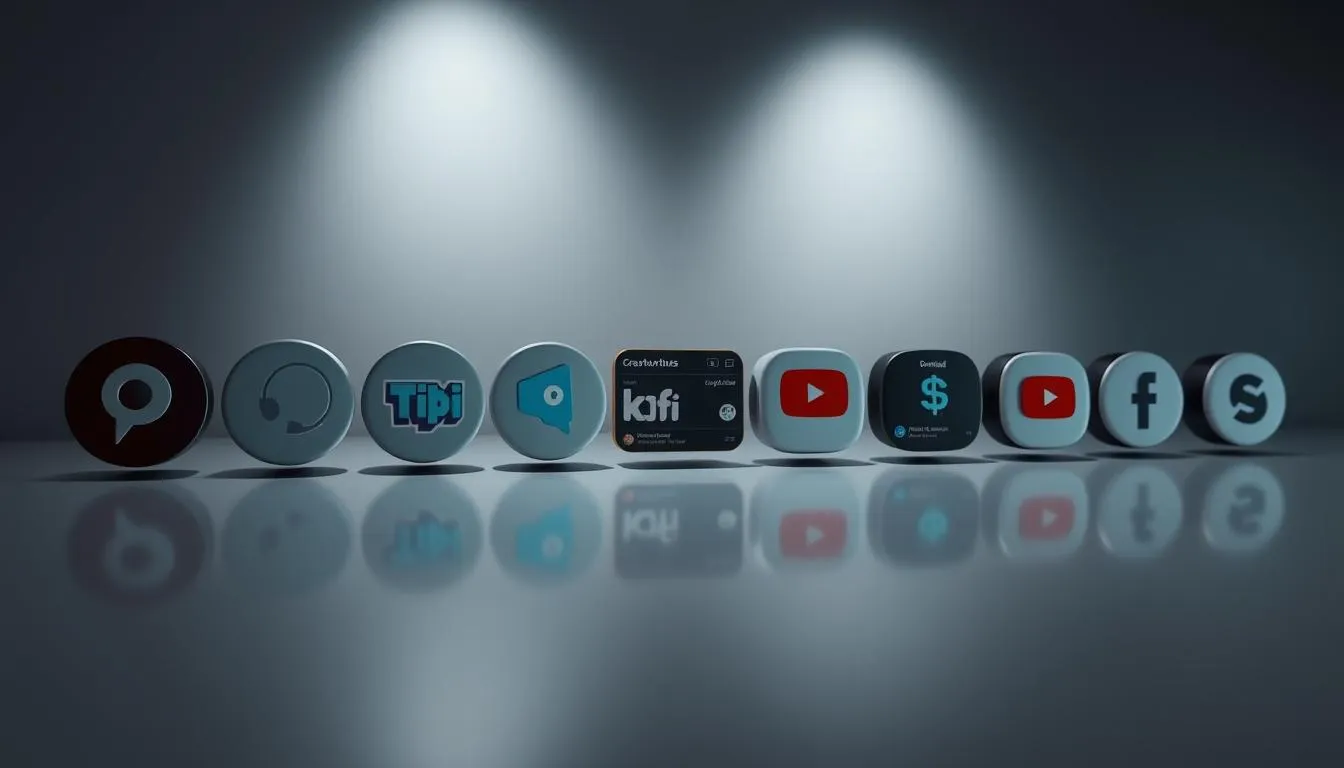Fact: a single live event once brought in $16,000 in one night for a streamer, showing how small gifts can scale into real income.
Direct support now lets fans help makers earn beyond ads. Platforms from YouTube to Instagram and TikTok let people send small amounts—often $5–$20—that add up fast.
Fans can pick options like live badges, virtual gifts, or profile tip links. Some platforms keep a cut, others route payments with no fee. These features give creators a steady way to make money while staying independent.
Tips do more than pay bills. A quick donation says, “Your work matters,” and that message helps creators keep producing. Later sections will map fees, show tools, and offer smart ways fans can give and creators can guide support.
Key Takeaways
- Small payments ($5–$20) can fund gear and time for creators.
- Major platforms offer different features and fee structures to watch.
- Tipping builds a direct bond between fans and creators.
- Both casual gifts and regular support matter for long-term work.
- Learn how to add support links—see Medium’s guide for one example: Medium’s tipping setup.
What Creator Tipping Is Today—and Why It Matters
Micro-payments during live streams and posts let audiences support artists the same way they tip street performers.
Virtual tipping is a one-way show of appreciation, not a service charge. Unlike restaurant gratuities, this model rewards entertainment, community, and effort. Fans send small amounts to say “thanks” and to join a moment during a live session.
Social media made giving seamless with native badges, Tip Jar tools, cheers, and virtual gifts. A single click can deliver immediate feedback to a creator and highlight a user in chat.
 Most tips fall between $5 and $20, yet these sums add up over time. For newer creators, that steady stream of small gifts can cover basic costs, upgrade gear, or buy focused time to produce better content.
Most tips fall between $5 and $20, yet these sums add up over time. For newer creators, that steady stream of small gifts can cover basic costs, upgrade gear, or buy focused time to produce better content.
Why people give
- To say thanks and feel part of a community.
- To motivate performers in the moment during streams.
- To help stabilize income when algorithm shifts affect ad money.
Over the years, pandemic-driven habits accelerated this trend. Mindful, regular support helps keep creators independent and less exposed to volatile ad revenue. For a guide to platforms that make this easy, see best tipping platforms.
Creator tipping across major platforms: features, fees, and availability
Each platform has its own system for small payments, so features and fees can vary widely.
YouTube — Super Chat, Super Stickers, and Applause let fans highlight messages during live streams or support uploads. These features work on monetized channels for users 18+; expect about a 30% platform cut that reduces net revenue.
Instagram — Live Badges show heart icons at preset prices ($0.99, $1.99, $4.99). Expanded access now covers many accounts and Instagram takes 0% on badges, which benefits creators during streams.
TikTok — Virtual gifts convert to diamonds; direct Tips require eligibility (18+, specific countries, often 100,000 followers and good standing). Payouts use Stripe, daily tip caps apply, and supporters can choose preset amounts like $5/$10/$15/$20 or tip anonymously.
 Twitch — Bits and Cheers are an affiliate feature. Viewers buy Bits and Cheer in chat; creators earn about $0.01 per Bit. The platform cut is not fully public, so creators should track actual payouts.
Twitch — Bits and Cheers are an affiliate feature. Viewers buy Bits and Cheer in chat; creators earn about $0.01 per Bit. The platform cut is not fully public, so creators should track actual payouts.
Twitter/X — Tip Jar allows users to add third‑party payment links (Cash App, PayPal, Patreon, Venmo, Bandcamp) or a crypto address. X charges 0% platform fee, but sharing a payment service publicly links your username.
Facebook — Stars are sold in packs; each Star converts to roughly $0.01 for the creator. Platform charges vary (estimated 5%–30%), so check pack pricing and payout terms.
Quick advice: compare features, platform cuts, and payment logistics before you share payment links or rely on one app. Understanding fees and eligibility helps you pick the best channels to make money and keep fan support steady.
Link-in-bio and tipping tools that streamline support
A tidy link page reduces friction and helps fans move from interest to actual support in seconds. A single link hub keeps payment pages, membership options, and small donation paths in one place so followers don’t juggle multiple apps.

Linktree Support Me and Buy Me a Gift
Linktree now offers Support Me links with a 0% platform cut and several payment partners. Creators can set custom tiers and priority animations. The new Buy Me a Gift adds five emoji gifts (coffee, taco, cake, beer, present) and, when connected to PayPal or Square, offers limited-time no-fee processing.
Buy Me a Coffee, Ko‑fi, and other small‑dollar options
Buy Me a Coffee uses a simple “buy coffee” model (default $5, adjustable $1–$5) and supports memberships, wishlists, and small storefronts. It charges a 5% fee but makes it clear what donations will fund.
Ko‑fi is a familiar, low-friction alternative for small donations and light memberships. For international reach, Selar’s Show Love routes payments via Apple Pay, Google Pay, Klasha, and local methods into a Selar wallet; small payout fees apply.
Embed options and practical tips
ConvertKit’s tip jar can be embedded in emails and sites as a direct tipping feature with preset amounts and automation perks. Test which links convert best, label each option clearly, and place a visible CTA so fans can show love quickly.
- Use a primary link for immediate donations.
- Offer one membership path and one quick tip jar for fast support.
- Track which links lead to the most completed donations and adjust labels.
Specialized tipping experiences for creators
Some platforms bake small payments into core workflows, making support feel natural during every interaction.
OnlyFans: many touchpoints, known cut
OnlyFans offers tips on live streams, individual posts, DMs, and a profile tip link. Fans can reward work wherever the interaction happens.
The platform takes a 20% cut, so track gross versus net earnings when you plan goals and payouts.
Cameo: gratuities after delivered videos
Cameo ties tips to delivered personalized videos. In 2018 about 15% of orders included a gratuity, with the average tip near 55.5% of the video price.
This feature rewards satisfaction with finished content and shows how a paid order can turn into extra income for creators.
Clubhouse Payments: full payouts via Stripe
Clubhouse routes payments through Stripe so creators receive 100% of the amount. Users still pay Stripe processing fees, but the platform does not take a cut.
Each of these platforms cultivates distinct fan behaviors. Some prioritize live interaction, others reward finished work. Choose the platform where your audience already engages, state how tips fund projects, and compare fees, payout timing, and allowed content to maximize net money and smooth donations.
Creator tipping in action: real examples and takeaways
Live broadcasts often turn quick gifts into steady, meaningful income. Real moments — from sleep streams to dance sessions — show how audiences move from watching to supporting.
Sleep streams to dance streams: what drives fans to send tips
On Twitch, Asian Andy earned $16,000 during a single sleep stream when alerts woke him. Fans paid small amounts to trigger sounds and reactions. Just Dance viewers tip smaller channels to cheer moves and build community.
Community, mutual aid, and motivation: why people support creators
People give for connection, mutual aid, and to reward content that brightens their day. Typical tips of $5–$20 add up fast when a streamer goes live often.
- Small gifts become steady income: Sizzsarz reported roughly 30% of earnings from tips after growth.
- Gamified alerts: make donations fun and visible, boosting more gifts.
- Practical takeaway: align streams with moments that inspire tips — Q&As, milestone goals, or on‑stream challenges.
Celebrate supporters and state what donations fund. That transparency helps way fans feel seen and keeps the donation culture thriving over the years.
How to set up, optimize, and promote your tip jar
Start with one easy-to-find tip jar and make the path to support obvious on every platform. Use a link hub so cross-platform fans can choose the best option to give.
Pick a primary channel and a link hub
Choose one main place to accept tips—Linktree’s Support Me, Buy Me a Gift, Buy Me a Coffee, or a ConvertKit Tip Jar embedded in your site or newsletter.
Link hubs let you add other links like Selar’s Show Love or Ko‑fi for international fans. That reduces friction and helps people show love quickly.
Suggested amounts, messages, and shoutouts that convert
Offer clear suggested amounts ($5, $10, $20, $50) and explain what each level funds in your work or content.
- Personalize messages so supporters know the impact.
- Use rewards: on-stream shoutouts, credits, or early access.
- Automate thank-you notes with ConvertKit to keep momentum.
Be transparent about fees, goals, and payouts
State fees and payout timing up front—Buy Me a Coffee has a ~5% fee, Linktree supports PayPal/Square, and TikTok/Twitter route payments via Stripe or third-party services.
Share what tips fund (gear, editing, or monthly costs). Clear goals help fans feel connected and more likely to support regularly, which is the best way to earn money from small gifts.
Conclusion
Today’s mix of features and external tools gives people fast ways to back the work they love. ,
tipping platforms and link-in-bio tools make it easy for followers and casual viewers to send gifts or small donations. Compare fees, payout timing, and the specific feature set each platform offers so you can protect net income and reduce friction.
Treat tips as one pillar of revenue alongside memberships, merch, and sponsorships. Pick one primary channel, add clear links, say what donations fund, and thank supporters so users send repeat support.
With the right setup across apps and platforms, small payments can help content creators earn money and make income more predictable over time.
FAQ
What is creator tipping and why does it matter?
Creator tipping is a way for fans to send money to people who make videos, art, music, livestreams, or written content. It matters because small-dollar gifts and donations help independent makers cover costs, stay motivated, and turn passion into sustainable work. Tips also build closer relationships between creators and their communities.
How do platform fees and payouts usually work?
Fees vary. YouTube’s Super Chat and Super Stickers can take about a 30% cut, while some services like Twitter/X let users send tips via third-party payment links with no platform fee. Stripe and PayPal power many payouts and may charge processing fees. Always check each platform’s payout schedule, minimums, and payout methods.
What are typical tip sizes and how much impact do they have?
Typical tips range from small amounts like $1–$5 to higher gifts of $20 or more. Even small tips add up: multiple $3–$5 contributions can meaningfully increase monthly income for niche creators. Suggesting small, affordable amounts often encourages more fans to participate.
Which platforms offer built-in tipping features?
Several platforms offer built-in options: YouTube has Super Chat and Applause, Instagram Live offers badges, TikTok supports Gifts and Tips, Twitch uses Bits and Cheers, Facebook has Stars, and OnlyFans and Cameo provide tipping within their ecosystems. Each option has eligibility rules and different revenue splits.
What should I know about link-in-bio tools for collecting payments?
Link hubs like Linktree and payment-focused services such as Buy Me a Coffee or Ko-fi let creators centralize support options. These tools connect to payment partners and let fans choose donations, memberships, or one-off gifts. Use a clear label and prioritize the most convenient payment methods for your audience.
How do specialized platforms differ for support options?
Niche platforms tailor features: OnlyFans supports tips on streams, posts, and DMs and typically takes a platform cut (around 20%), Cameo can accept gratuities tied to paid videos, and Clubhouse Payments processes direct Stripe transfers with no platform fee. Pick a platform that matches your content and audience expectations.
Are there limits or eligibility requirements for tips on TikTok and Twitch?
Yes. TikTok often enforces eligibility limits, daily caps, and payout rules, while Twitch reserves some features like Cheers for affiliates or partners. Verify account age, follower thresholds, and regional availability before promoting tip features.
What’s the best way to present suggested amounts and messages?
Recommend a few quick options—like $3, $5, $10—and offer custom amounts. Pair suggested amounts with brief messages about what the money supports (equipment, research, giveaways). Personalized thank-you notes and occasional shoutouts increase repeat support.
How should creators handle transparency about fees and goals?
Be honest: share how much goes to fees and what net tips will fund. Display goals or milestones so fans see the impact of their support. Clear reporting builds trust and encourages larger or recurring gifts.
Can tips be used as part of a broader revenue strategy?
Yes. Tips work well alongside memberships, sponsorships, merchandise, and paid content. Use a link hub to guide fans to multiple ways to support, and promote different options for occasional versus recurring contributors.
What drives fans to send money during streams or posts?
Engagement and community are key. Interactive formats like sleep streams, dance streams, or live Q&As create moments where fans want to show appreciation. Exclusive perks, real-time recognition, and a strong community purpose all motivate gifts.
How should creators promote their tip jar without annoying followers?
Mention support options naturally: pin a short reminder during streams, include a link in your bio, and occasionally post updates on progress toward goals. Keep calls to action light and focus on value and community, not pressure.
What privacy or tax considerations should supporters and creators know?
Tips may be taxable income for creators depending on local laws. Supporters should avoid sharing sensitive payment details publicly. Creators should track donations, review platform tax documents, and consult a tax professional for reporting requirements.
How do platform cuts affect what creators actually receive?
Platform cuts and payment processor fees reduce net revenue. For example, YouTube’s built-in features can take roughly 30%, while services using third-party links may charge lower or no platform fee but still incur processing fees. Factor these costs into pricing for paid content and membership tiers.
Can fans give gifts or rewards instead of cash?
Yes. Some platforms offer virtual gifts, badges, or Stars that convert to creator revenue. Link-in-bio services may let fans buy merchandise or send digital tips. Offering noncash ways to show support can broaden appeal and boost engagement.
